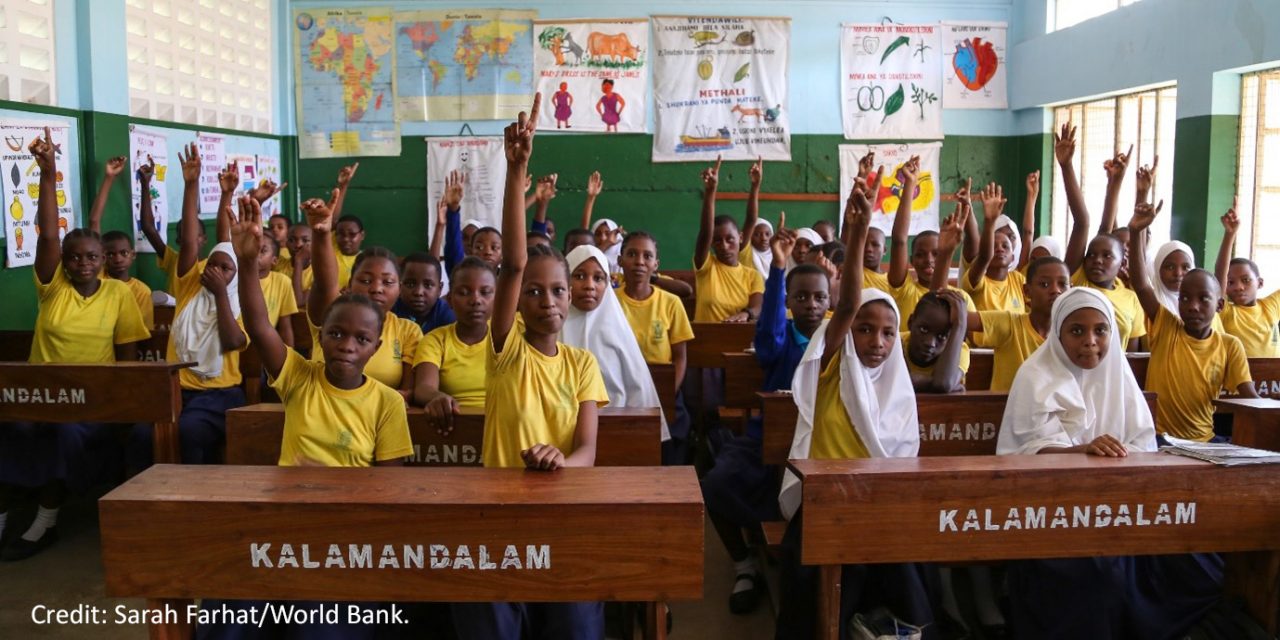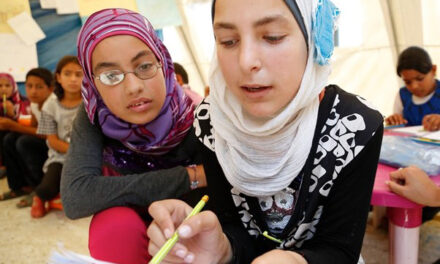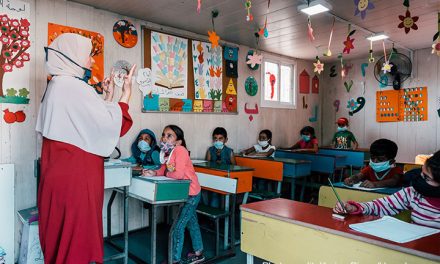Yulia Nesterova, Ph.D. is a Research Fellow based at GCRF Centre for Sustainable, Healthy, and Learning Cities, University of Glasgow. Yulia works with partners in fourteen cities in seven countries across Africa and Asia to assess the provision and outcomes of formal and non-formal educational facilities and services.
A wealth of social and economic opportunities continue to attract people from rural areas to fast-growing cities, especially in Africa and Asia. By 2050, nearly 70 out of 100 people in the world will live in cities.
Cities have helped lift millions out of extreme poverty. They have improved livelihoods. But rapid and poorly controlled urbanisation has also brought tremendous challenges and increased risks. More people has led to worsening air pollution in some cases, and in the unsustainable use of resources like water in others. It has also overburdened infrastructure and services, making them inadequate.
What’s more, around a billion urban poor people live in informal settlements like slums, with this number estimated to skyrocket to three billion by 2025.
Access to better educational opportunities is one of the top reasons people migrate to urban areas. Since facilities are sometimes lacking in rural communities, cities feel like the simple solution. The place to find better-resourced schools that offer greater quality and effectiveness of education and provide a wider range of extracurricular activities to enhance and enrich the lives and opportunities of residents.
But not all people who live in cities benefit from quality education.
The opportunities and benefits – as well as the challenges and harms – that cities offer are not equally distributed. In fact, the research done by our consortium, Centre for Sustainable, Healthy and Learning Cities that explores a range of important urban issues in over a dozen growing cities around Africa and Asia, shows that urban opportunity is often confined to people residing in high-income neighbourhoods. What is more, those in poorer neighbourhoods tend to be disproportionately affected by the consequences of systemic and structural inequalities, violence, insecurity and environmental risks.
In this sense, the neighbourhoods that people find themselves in become their destiny. Where they live determines what opportunities and support they can access… if any.
Slum dwellers provide an extreme example. The precarious places they call home have a massive impact on what they can expect to achieve in future. This is because deprivation is extreme and there is limited access to even the most basic infrastructure – be it housing, electricity, sanitation systems, clean water or transportation. By extension, access to education services and learning opportunities is limited as well.
Over the last three years, we have been studying ultra-poor parts of Bangladeshi and Tanzanian cities, where we’ve found the number of available and accessible schools to be inadequate. What is available is restricted to the primary school level and is poorly resourced. There are not enough classrooms, qualified teachers, textbooks, toilets or clean water, let alone extracurricular activities.
While there are more schools of different levels in India’s slums, conditions are just as inadequate, and drop-out rates are as high as those in Bangladesh and Tanzania. Schools in poor urban settings in the other countries we work with – the Philippines, Rwanda and South Africa – seem to suffer from a range of common issues linked to staffing (not enough qualified teachers) and infrastructure (lack of water and sanitation facilities and properly equipped classrooms).
What is interesting is that unequal distribution of opportunities does not only affect people in the very poorest neighbourhoods. In lower middle-income (and even some middle-income) neighbourhoods, the situation is better, but not by much. There might be a greater variety of schools and more of them, but this is not a given everywhere. And the issue becomes more complex when you look inside schools.
To be sure, there are some differences that come with being in a higher income bracket. We noted more availability of extracurricular activities in schools – ranging from sports to cultural. But issues like high drop-out rates, teenage pregnancies and challenges in accessing schools in better-equipped neighbourhoods due to the lack of walkable footpaths and transportation remained constant.
People living in these neighbourhoods still have lower literacy and school completion rates compared to higher-income areas, and, as a result, less opportunities for socio-economic advancement.
It does get better. Middle- and upper-middle income neighbourhoods have – save a few exceptions – good availability, coverage and quality of educational institutions. They offer not only primary and secondary schools, but also kindergartens, colleges, adult learning institutions and universities.
The problem is that these neighbourhoods have clusters of poverty and the people who find themselves living in these neighbourhoods are often quite isolated – ‘stuck’ in schools located in old, unsafe buildings and overcrowded classrooms.
When it comes to high-income areas, the situation is by far better than across the rest of the cities. Here you find renowned institutions, well-equipped and resourced schools, variety of extracurricular activities, well-educated parents, strong parent-school relationships and great ambitions on the part of the children.
As our Tanzanian part of the research shows, migration into high-income neighbourhoods is putting pressure on the available services that cannot develop as fast as people migrate. This shows that even better resourced neighbourhoods are not prepared for what urbanisation is bringing.
What is needed then is targeted research that explores educational opportunities at the level of neighbourhoods. Localised data will help us develop interventions that address the effects of urban complexity and disparities. What is also important, as our work shows, is collaborating with local academic and non-academic partners. Partnerships with local governments, NGOs, schools and communities do not only ensure local buy-in, but do help to get research into policy and practice for a successful change.






Trackbacks/Pingbacks